When I started researching this list of the best sunscreens for kids, I couldn’t believe how many of the bottles in my own house contain harmful ingredients (and lack the good ones). It used to be that we picked the first tube we saw at the drugstore, but it turns out many well-known brands are actually some of the worst choices out there. So, what should you look for in a sunscreen or sunblock? “I recommend choosing a ‘physical’ or ‘chemical-free’ sunscreen made with zinc oxide or titanium dioxide,” says Jody Levine, MD, Director of Dermatology at Plastic Surgery and Dermatology of NYC, PLLC. “Both of these ingredients form a barrier against the sun’s UVA and UVB rays as they sit on top of the skin.” In addition to choosing a mineral sunscreen, the Environmental Working Group warns against choosing spray sunscreens (it’s easy to miss a spot), sunscreens with SPFs over 50+ (falsely suggest you can stay in the sun longer), and sunscreens containing oxybenzone, a chemical which (some studies suggests) may cause allergies and/or health disorders.
And there’s more to sunblock than just knowing which one to buy. There’s also knowing when and how to apply sunblock. “If you are using a chemical sunscreen, it’s best to wait 20 to 30 minutes after applying before going outside so the UV filters have time to soak into your skin and form a protective layer,” says Dr. Levine. “However, sunscreens with titanium dioxide and zinc oxide actives (‘physical sunscreens’) are effective as soon as you put them on.” As for how often, Dr. Levine suggests re-applying every two hours — or even sooner if you sweat a lot, exercise vigorously, or go swimming.
Whether you choose a chemical or physical sunscreen for your family, make sure it is made with kids’ sensitive skin in mind. Check to see if it contains at least SPF 30 and that it is labeled as “broad spectrum.” Look for something that is sweat and water resistant (because with kids, you never know!), and don’t be put off by the product’s “thick” or “pasty” quality — that’s the non-nano zinc and/or titanium (ie, what makes it good). I know, it’s a lot to remember, but choosing the right sunblock for your kids is vital. “Most of our lifetime sun exposure occurs before we turn 18 years old,” adds Dr. Levine. “Repeated short-term damage such as a sun burn can lead to skin cancer.”
With that in mind, we hope you’ll check out this slideshow of the best sunscreens, compiled by the Environmental Working Group. And don’t forget: Children under 6 months old should not use sunscreen.
More Great Sun Care Info:
- Sun Care 101: A Mom’s Guide to Sunscreen and Sunblock
- Best Sunscreen for Under Makeup
- Sunscreen Wars: 5 Tricks That Will End the Battle
Best Sunscreens for Kids
-
Sunology Natural Sunscreen for Kids SPF 50, Broad Spectrum
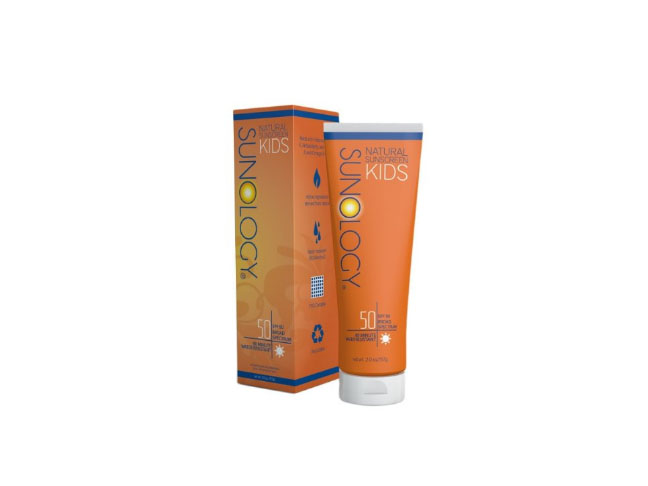
With Zinc Oxide and Titanium Dioxide as the active ingredients, this smooth, gentle SPF 50 physical sunscreen will keep your kids extra safe. Water resistant for 80 minutes.
Price: $14.99
-
All Good SPF 33 Sunscreen
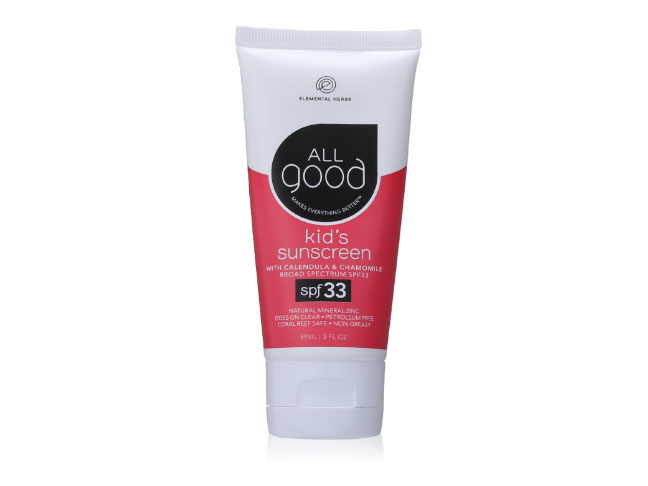
This Zinc Oxide-based broad spectrum sunblock is chemical free and full of soothing, organic ingredients that go on smooth. However, it is not water resistant.
Price: $13.96
Photo: Amazon
-
Badger Balm SPF 30 Kids Sunscreen Cream
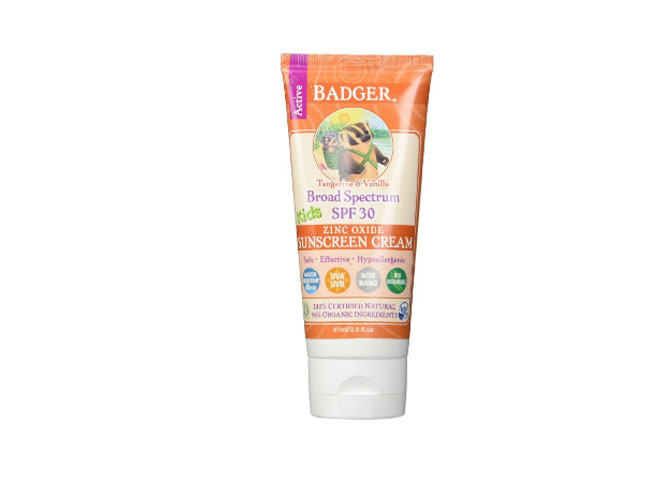
Badger goes on a bit thick (all the zinc sunblocks do!), but it's made with only six ingredients and is both water and sweat resistant. Hypoallergenic, too!
Price: $13.74
Photo: Amazon
-
ThinkBaby Safe Sunscreen, SPF 50+
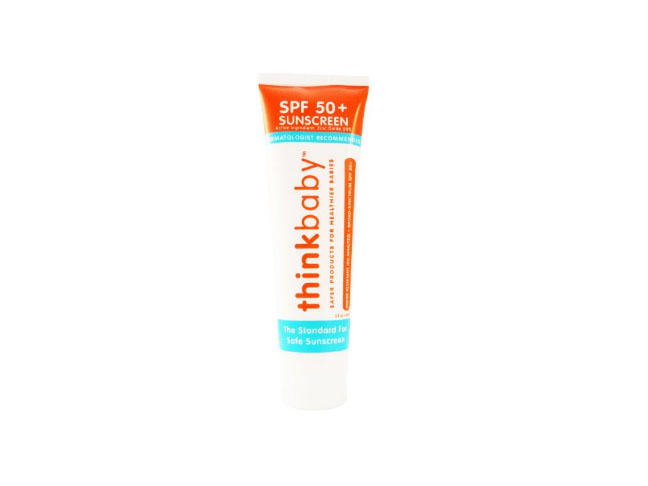
ThinkBaby and ThinkSport are a great choice for active families who plan on spending a lot of time in the sun (and in the water!) this summer. And, it doesn't contain the chemicals oxybenzone and avobenzone.
Price: $10.44
Photo: Amazon
-
TruKid Sunny Days Sport SPF 30 Plus Water-Resistant UVA/UVB Sunscreen Lotion
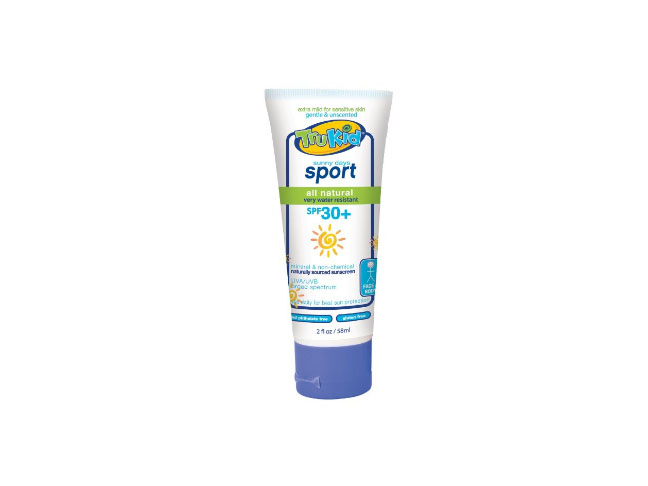
This water-resistant sunscreen is great for the environment and for active kids. It offers broad-spectrum protection from UVA/UVB rays, and boasts to be "eczema safe."
Price: $14.99
Photo: TruKid
-
Adorable Baby SPF 30+ Sunscreen
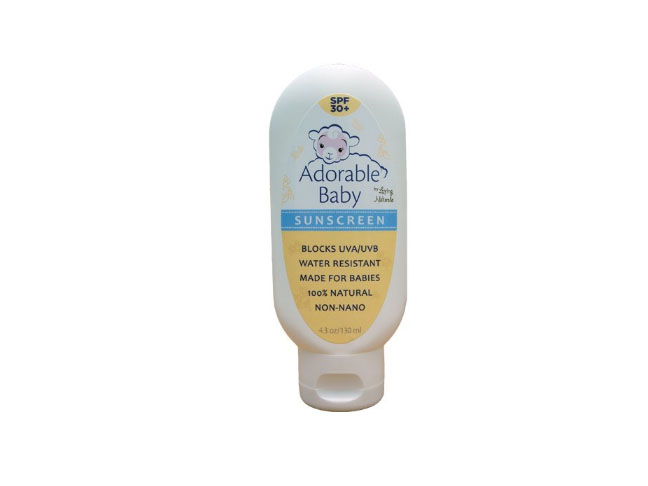
Water resistant Adorable Baby is 100 percent natural and contains organic oils alongside the non-nano zinc oxide (and no harsh chemicals) in order to leave kids with soft, protected skin.
Price: $18.75
Photo: Amazon
-
California Baby Super Sensitive Sunscreen Lotion, SPF 30+

California Baby is a favorite around our house. The active ingredient is titanium dioxide, and it contains organic and sustainably grown ingredients. Plus, it goes on smooth and is water resistant!
Price: $15.40
Photo: Amazon
-
BurnOut SPF 35 KIDS Physical Sunscreen
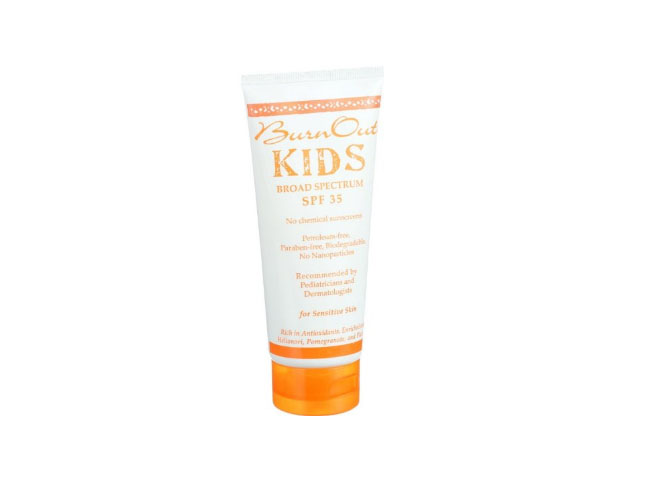
This chemical-free, zinc oxide sunscreen is loaded with antioxidants and nourishes the skin with enriching extracts while it protects. Not waterproof.
Price: $14.17
Photo: Amazon
-
Kiss My Face Kids Mineral Sun Spray Natural Sunscreen Lotion SPF 30 Sunblock

Kiss My Face is a great cruelty-free company. This titanium dioxide and zinc oxide-based sunblock has no chemicals or animal ingredients. Not water resistant.
Price: $12.31
Photo: Amazon
-
Jersey Kids Organic Sunscreen Baby Safe, SPF 30

This broad-spectrum zinc-oxide sunscreen is made with all natural, organic, and non-GMO ingredients, goes on smooth (thanks to shea butter and natural oils) and provides excellent UVA protection. Not water resistant.
Price: $19.99
Photo: Amazon
-
Bare Belly Organics Mineral Sunscreen, SPF 30
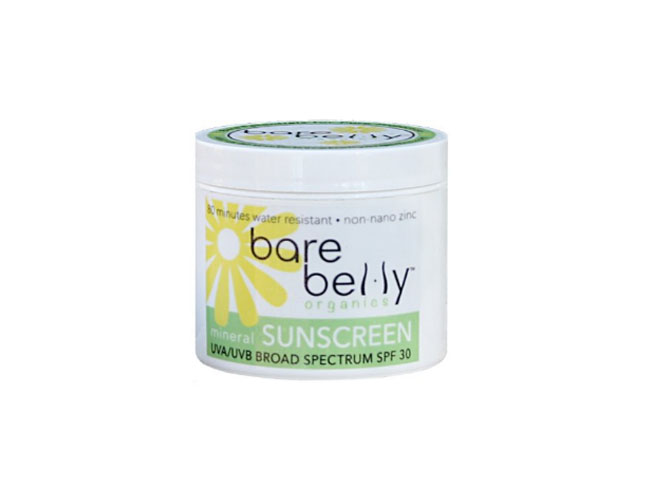
This sunscreen is among the highest in zinc oxide and contains lots of organic oils and vitamin E to nourish the skin. Water resistant (for 80 minutes), and comes in a convenient tub for easier application.
Price: $17.95
Photo: Bare Belly Organics
-
Goddess Garden Kids SPF 30 Natural Sunscreen
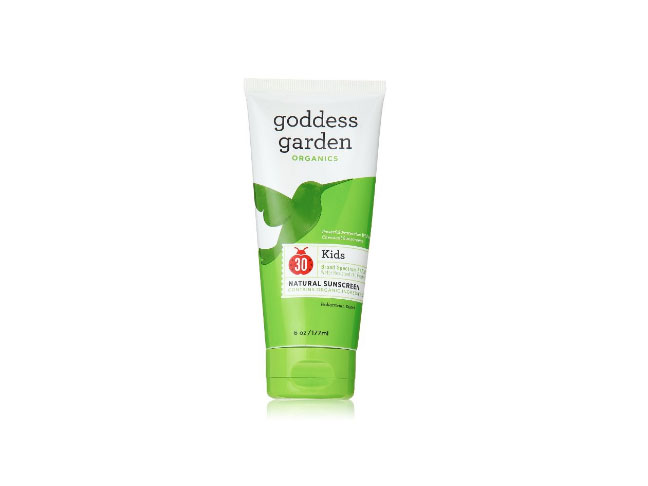
Goddess Garden Kids is made with both titanium dioxide and zinc oxide, and is filled with nourishing organic ingredients and broad spectrum UVA/UVB protection. Water resistant for 40 minutes.
-
COOLA Organic Suncare, Baby Unscented Mineral Sunscreen, SPF 50
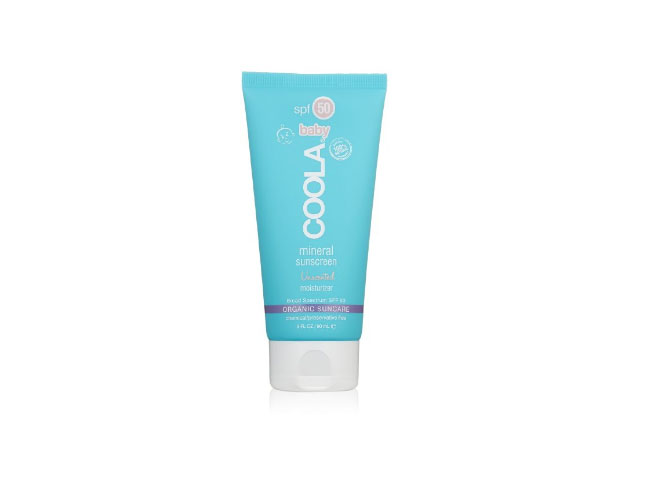
COOLA is a broad spectrum UVA/UVB water resistant sunscreen made just for your baby's sensitive skin. It is chemical-free, and loaded with yummy organic oils and butters to keep skin nourished and smooth.
Price: $36
Photo: Amazon
-
Blue Lizard Australian SUNSCREEN, SPF 30+
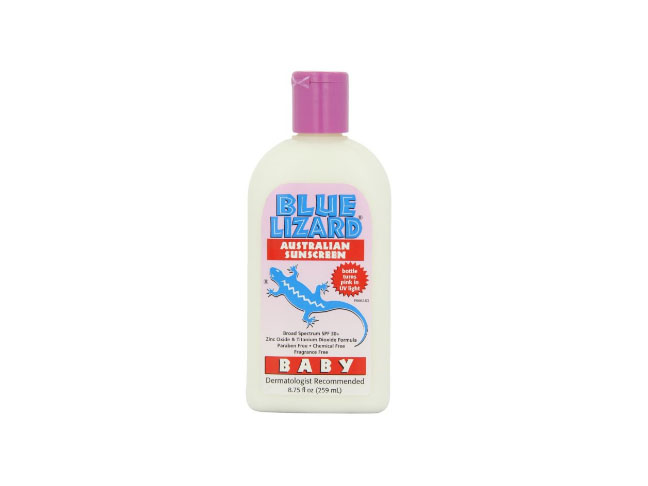
This water resistant, chemical-free sunblock has broad spectrum UVA/UVB protection and is made with both zinc oxide and titanium dioxide. The formula is gentle on baby's skin, and the bottle has the nifty ability to turn pink when exposed to harmful UVA rays.
Price: $23.13
Photo: Amazon
-
All Terrain Company KidSport, SPF 30
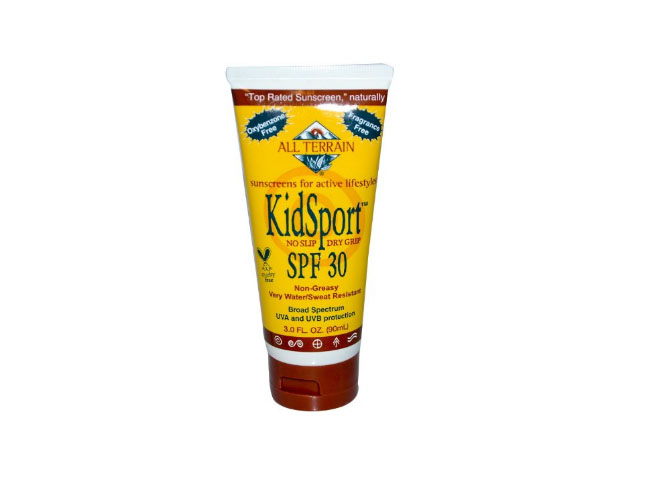
As you'd guess from the label, this sunblock offers great protection for dry-land sports (any sweat-based activity!). It is great for swimming, and boasts a non-greasy application.
Price: $24.99
Photo: All Terrain




